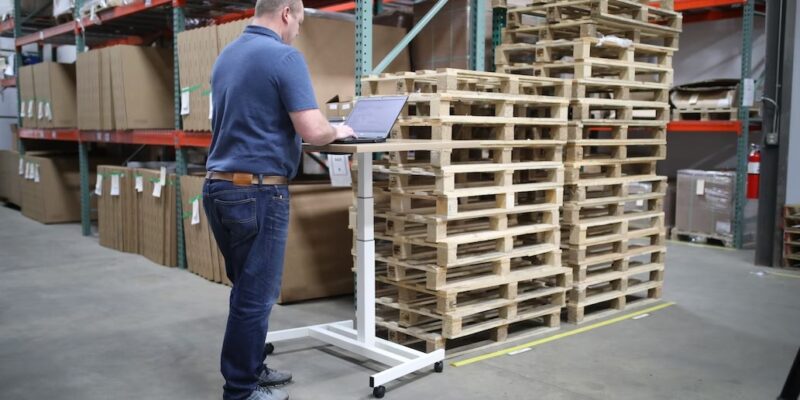Warehouse flooring is a crucial component of any industrial or commercial space. It is the foundation upon which your operations take place and is subject to significant wear and tear over time. Regular maintenance of your warehouse flooring is essential to maintain its longevity and ensure the safety of your employees. The cleanliness of your warehouse flooring can also impact the quality of your products, making it important to keep it clean and hygienic. In this article, we will discuss some tips on how to keep your industrial flooring clean.
Establish a cleaning routine
The first step in maintaining a clean warehouse floor is to establish a regular cleaning routine. Create a schedule that ensures your floors are cleaned regularly, depending on the level of foot traffic and operations taking place. For high-traffic areas, daily cleaning may be necessary, while less busy areas can be cleaned less frequently. Be sure to include sweeping, mopping, and spot cleaning in your cleaning routine.
Use the right cleaning products
The type of cleaning products you use will depend on the type of flooring you have in your warehouse. Some floors require specific cleaning agents that are designed to clean and maintain the integrity of the surface. It is essential to use the right cleaning products to prevent damage to your floors. For example, if you have a concrete floor, you may need a degreaser to remove oil and grease stains. If you have a vinyl floor, you may need a pH-neutral cleaner to avoid damage to the surface.
Invest in floor mats
Floor mats are an excellent investment for maintaining the cleanliness of your warehouse flooring. Placing mats at entry points can help to trap dirt, dust, and debris before it is tracked onto your floors. Floor mats can also prevent slips and falls by providing additional traction and reducing the risk of accidents. Be sure to clean your floor mats regularly to prevent the buildup of dirt and grime.
Use equipment designed for warehouse floors
Using the right equipment for cleaning your warehouse floors can make a significant difference in the effectiveness of your cleaning efforts. Invest in a high-quality commercial-grade vacuum cleaner for regular sweeping of your floors. For more thorough cleaning, use a floor scrubber or pressure washer designed for industrial use. These machines can make quick work of even the toughest stains and grime buildup.
Address spills and stains immediately
Spills and stains can be a common occurrence in a warehouse environment, and it is essential to address them immediately. Leaving spills or stains on the floor can cause them to become embedded in the surface, making them more challenging to remove. Have a spill response plan in place and ensure that your employees are aware of the procedures for cleaning up spills and stains promptly.
Implement a shoe policy
Implementing a shoe policy can help to prevent dirt, debris, and other contaminants from being tracked onto your warehouse floors. Require employees to wear appropriate footwear, such as closed-toe shoes with non-slip soles. Consider providing shoe covers or disposable booties for visitors or contractors who need to enter your warehouse.
Conduct regular inspections
Regular inspections of your warehouse flooring can help to identify any areas that require extra attention or maintenance. Look for cracks, chips, or other damage to the surface, as well as any areas that may require additional cleaning. Addressing these issues promptly can prevent further damage and help to maintain the overall cleanliness and safety of your warehouse.
In conclusion, maintaining a clean and hygienic warehouse floor is essential for the safety of your employees and the quality of your products. By establishing a cleaning routine, using the right cleaning products and equipment, and addressing spills and stains promptly, you can keep your warehouse flooring in top condition. Investing in floor mats, implementing a shoe policy, and conducting regular inspections can also help to maintain the cleanliness and safety of your warehouse.






Comments